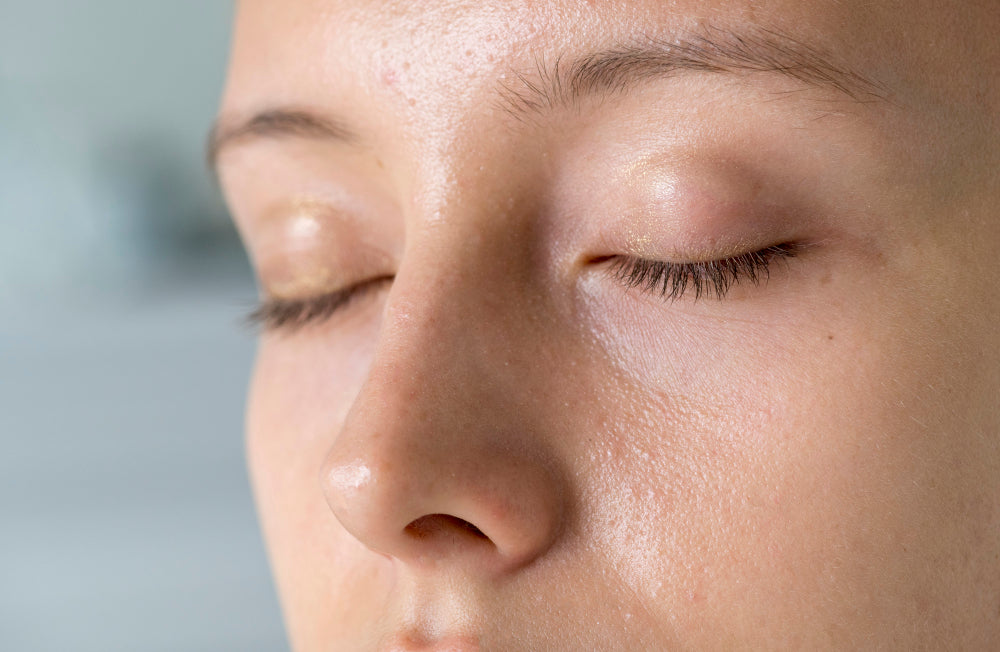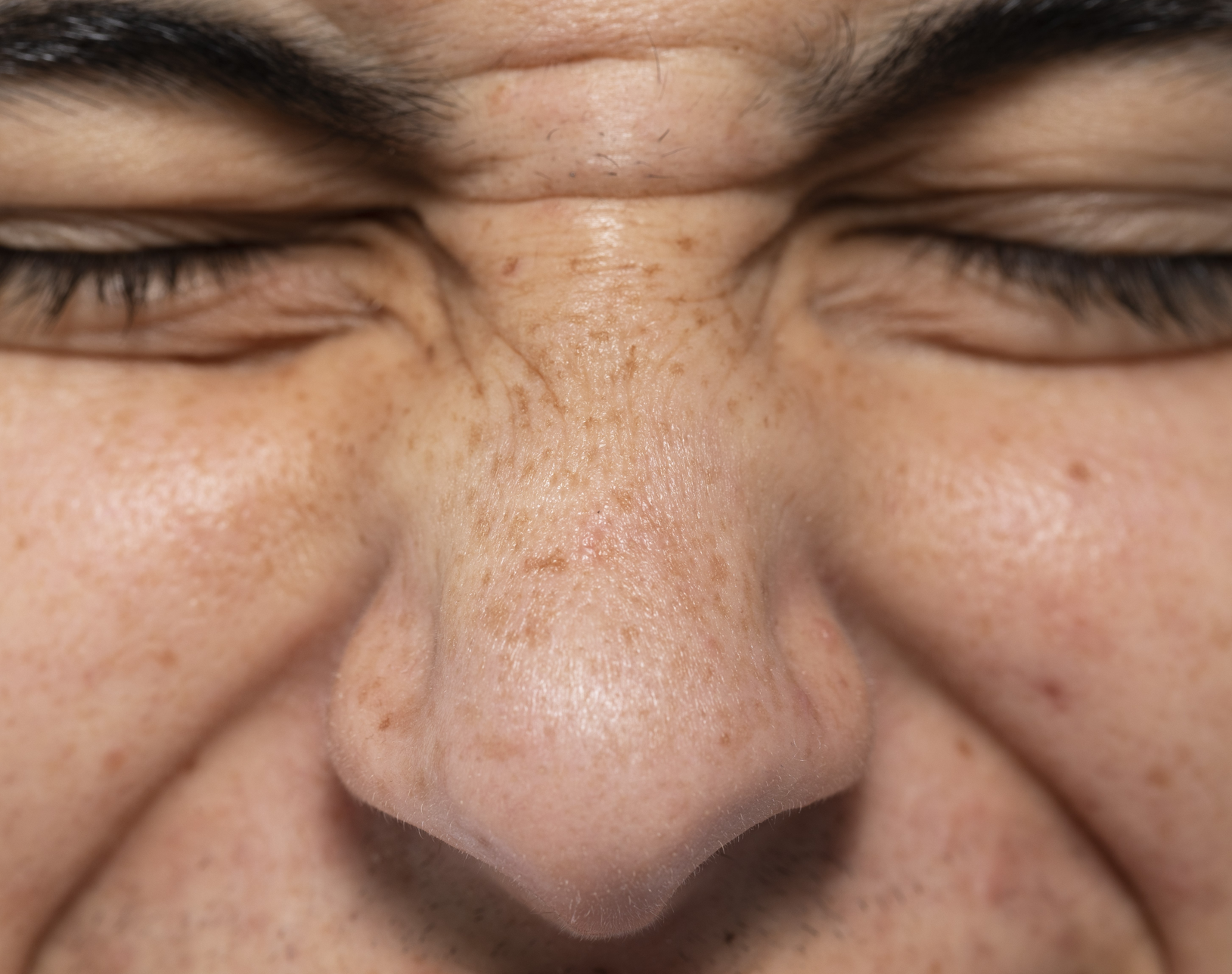Clogged Pores 101: What They Look Like, Root Causes, and Skin Care Tips

Clogged pores are a common skin concern that many people struggle with. Understanding what they are, their root causes, and how to manage them can help you achieve clearer, healthier skin. This comprehensive guide covers everything you need to know about clogged pores, from identification to treatment and prevention.
What Are Clogged Pores and What Do They Look Like?
Clogged pores occur when dead skin cells, oil, and dirt accumulate and block the skin's hair follicles. This blockage prevents the skin from breathing and can lead to various skin issues. When the pores are clogged, they can become inflamed, leading to blackheads, whiteheads, and acne.

Clogged pores as blackheads
Blackheads appear as small, dark spots on the skin's surface, caused by the oxidation of the clogged material.

Whiteheads, on the other hand, are closed pores filled with dead skin cells and oil, appearing as small, white bumps.
Clogged pores as acne
Acne can develop when these clogged pores become infected with bacteria, leading to redness, swelling, and sometimes painful pimples.
Is it OK to Squeeze Clogged Pores?
Squeezing clogged pores might be tempting, but it’s something you should avoid. It can lead to irritation, inflammation, and even scarring. Instead, try using proper skincare treatments to clear your pores safely and effectively.
Related: 5 Reasons Why Your Pores Are Enlarged and What You Can Do About It
Causes of Clogged Pores
Several factors contribute to the development of clogged pores:
- Excess Oil Production: Overactive sebaceous glands produce more oil, which can mix with dead skin cells and clog pores.
- Dead Skin Cells: Accumulation of dead skin cells on the skin's surface can block pores.
- Dirt and Pollution: Environmental pollutants and dirt can settle on the skin and contribute to clogged pores.
- Cosmetics: Heavy or comedogenic makeup products can block pores if not removed properly.
- Hormonal Changes: Hormonal fluctuations, especially during puberty, menstruation, or pregnancy, can increase oil production and clog pores.
How are Clogged Pores Diagnosed?
Dermatologists typically diagnose clogged pores through a visual examination of the skin. In some cases, they may use a magnifying device to assess the severity of the blockage and recommend appropriate treatments. This professional diagnosis is crucial for effectively addressing clogged pores and preventing potential complications.
It’s essential to consult a professional for an accurate diagnosis and tailored treatment plan. A dermatologist can provide expert guidance, ensuring you use the right products and techniques for your specific skin type and condition. This can help prevent further issues and promote healthier, clearer skin.
When to Consult a Professional for Blocked and Inflamed Pores
If over-the-counter treatments are not effective, or if your clogged pores are severe and causing significant discomfort or self-esteem issues, it's time to consult a skin expert. They can provide professional treatments such as extractions, chemical peels, or prescription medications to help clear your pores.
For targeted pores solution, check out Skin to Heart's signature pore treatments.
Professional Treatment for Clogged Pores
Professional treatments can effectively address clogged pores, offering solutions that go beyond over-the-counter products and home remedies. Here's how some of the most common professional treatments work:
- Chemical Peels: These treatments use a variety of acids to exfoliate the skin and clear clogged pores. Chemical peels can remove the top layer of dead skin cells, revealing fresher, clearer skin underneath. This process not only helps to unclog pores but also improves the overall texture and tone of the skin.
- Microdermabrasion: This procedure involves a specialised tool that exfoliates the skin by removing the outermost layer of dead skin cells. Microdermabrasion can help to unclog pores by clearing away the debris that can lead to blockages, leaving the skin smoother and more radiant.
- Laser Therapy: Laser treatments can be highly effective in reducing oil production and killing acne-causing bacteria. By targeting the sebaceous glands, laser therapy helps to control oil output, which can prevent pores from becoming clogged. Additionally, the antibacterial effects of the laser can help reduce inflammation and acne formation.
- Extractions: Dermatologists can perform manual extractions to remove blackheads and whiteheads in a sterile environment. This process is performed with specialised tools and techniques to ensure that the pores are cleared without causing damage to the skin.
Skincare Treatments for Congested Pores
Aside from getting professional treatment,incorporating the right skincare products into your routine can help prevent and treat clogged pores. Here are some skincare essentials that you may want to consider into your regimen for combatting clogged pores.
- Glycolic Acid Cleanser: This ingredient helps to exfoliate the skin and clear pores by penetrating deeply and dissolving debris and oil buildup. Regular use can prevent future clogs, keeping your skin clear and smooth.
Biopelle Gel Cleanser with 2.2% Glycolic Acid
- Retinoids: These Vitamin A derivatives increase cell turnover and prevent clogged pores by promoting the shedding of old skin cells and the growth of new ones. They are particularly effective in treating acne and improving skin texture.
Emepelle Night Cream with 0.1% Retinol
- Clay Masks: Clay masks absorb excess oil and draw out impurities from the pores. Using a clay mask regularly can help keep your pores clear and reduce the likelihood of blockages, leaving your skin feeling refreshed and clean.
Dermaceutic Mask 15 - Oil Reducing Mask
- Non-comedogenic Moisturisers: These products hydrate the skin without clogging pores. Choosing non-comedogenic formulations ensures that your skin stays moisturised and healthy without contributing to pore congestion.
Biopelle Tensage Soothing Cream Moisturizer [Non-comedogenic]
How to Prevent Clogged Pores
Preventative measures can keep your pores clear and healthy:
- Regular Cleansing: Wash your face twice a day to remove dirt, oil, and makeup.
- Exfoliation: Use gentle exfoliants to remove dead skin cells.
- Non-comedogenic Products: Choose skincare and makeup products labeled as non-comedogenic.
- Balanced Diet: Eat a diet rich in fruits, vegetables, and whole grains to support overall skin health.
Clogged Pores FAQs
What is the white stringy substance that emerges from a pimple?
This substance, known as sebum, is an oily secretion from the sebaceous glands. When trapped in pores, it can lead to clogging and contribute to acne. Understanding this natural process is essential in our journey towards radiant skin.
Do pore vacuums truly deliver results?
While pore vacuums can assist in removing surface-level debris, their effectiveness may wane against deeper blockages. Additionally, they can sometimes lead to skin irritation. It’s important to approach such treatments with care and consideration for your skin’s unique needs.
Can clogged pores resolve on their own?
Indeed, clogged pores can clear up with a thoughtful approach to skincare and targeted treatments. Consistency is vital in your skincare routine, as it helps prevent future clogs and promotes a vibrant complexion.
Experience Unparalleled Skin Treatment in Melbourne
If you find yourself grappling with clogged pores, we invite you to embrace the opportunity for professional guidance. At Skin to Heart, our dedicated dermatologists and estheticians provide personalised treatment plans designed to nurture not just your skin, but your overall well-being. Our approach transcends traditional skincare, offering a holistic experience that fosters a deep sense of community and belonging.
We encourage you to schedule your consultation today and embark on a transformative journey towards clearer, healthier skin. Discover the exceptional care and personalised attention that awaits you at Skin to Heart, where every visit is an invitation to elevate your sense of self and indulge in the luxury of holistic wellness.
0 comments

